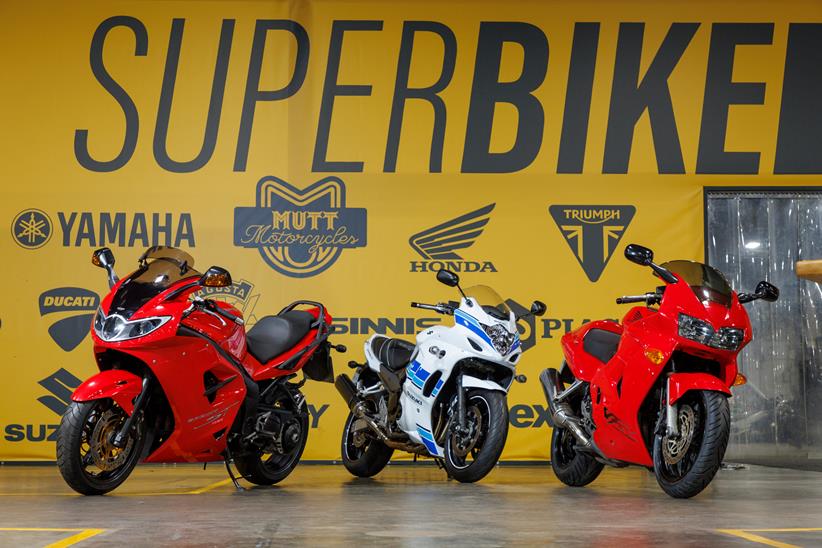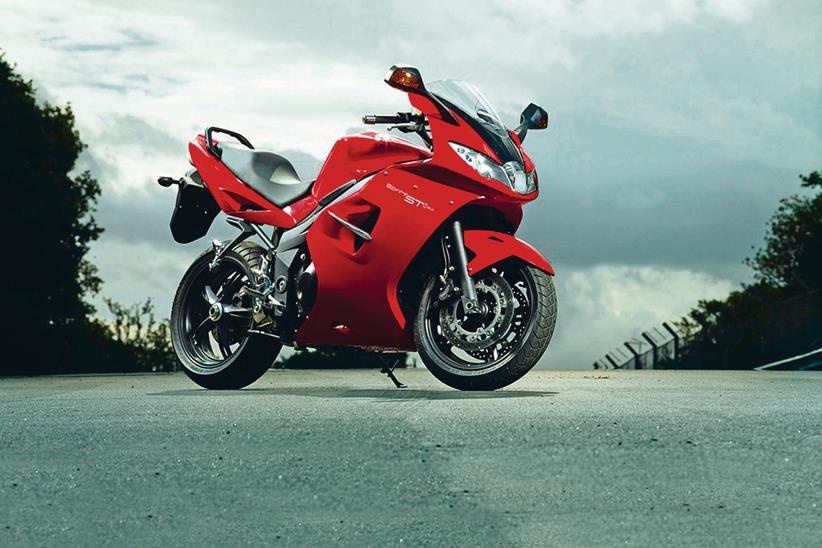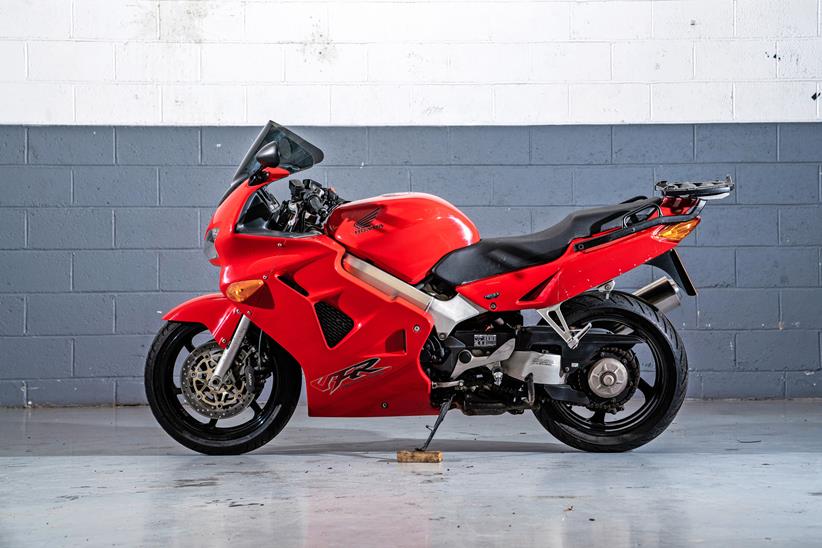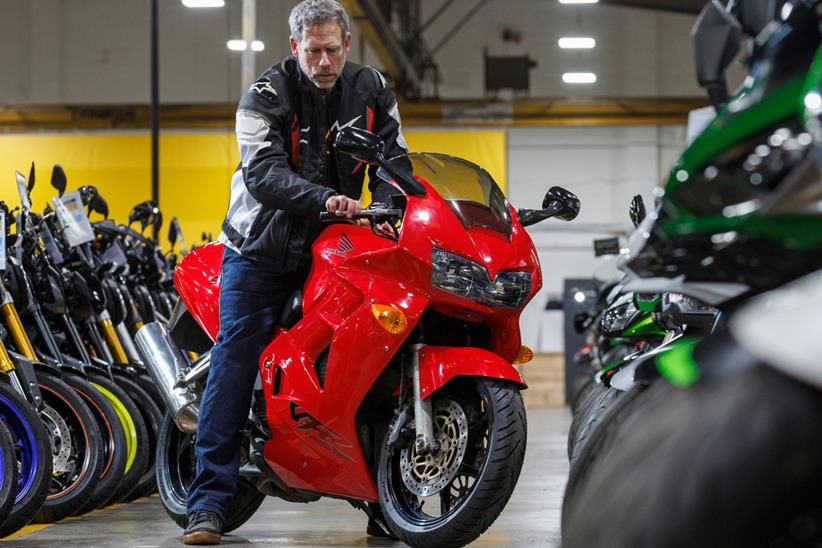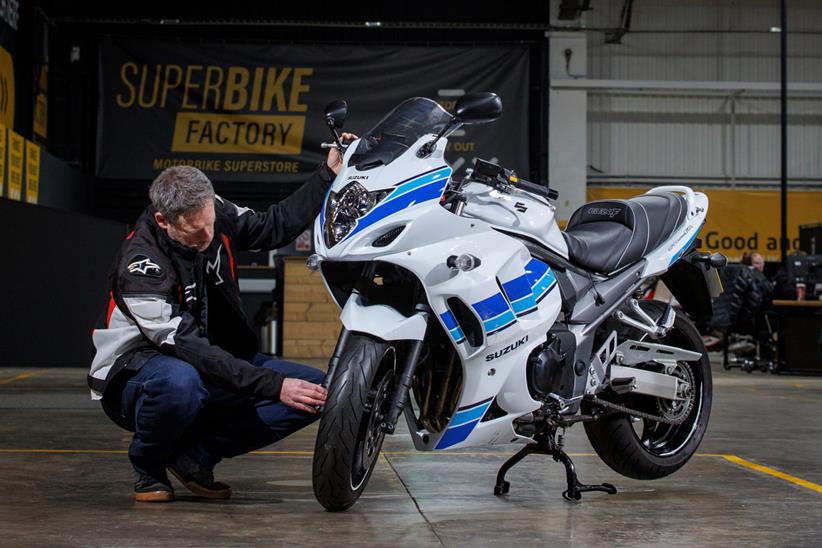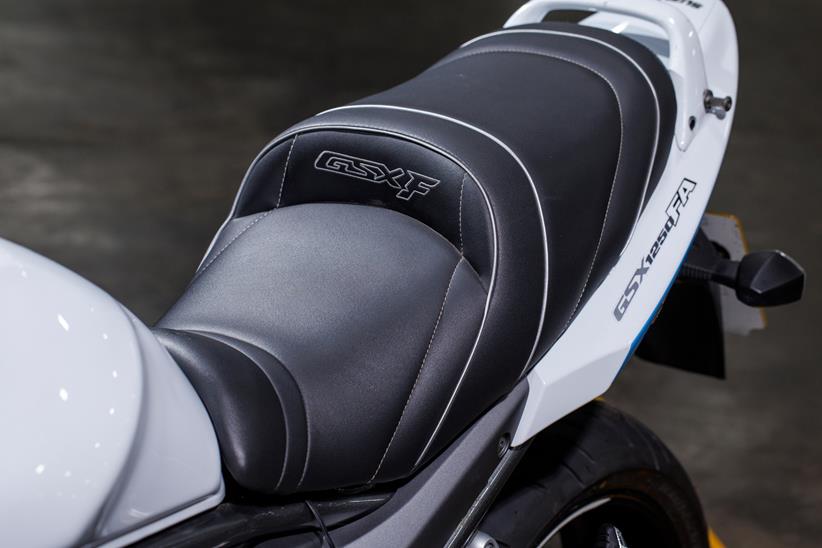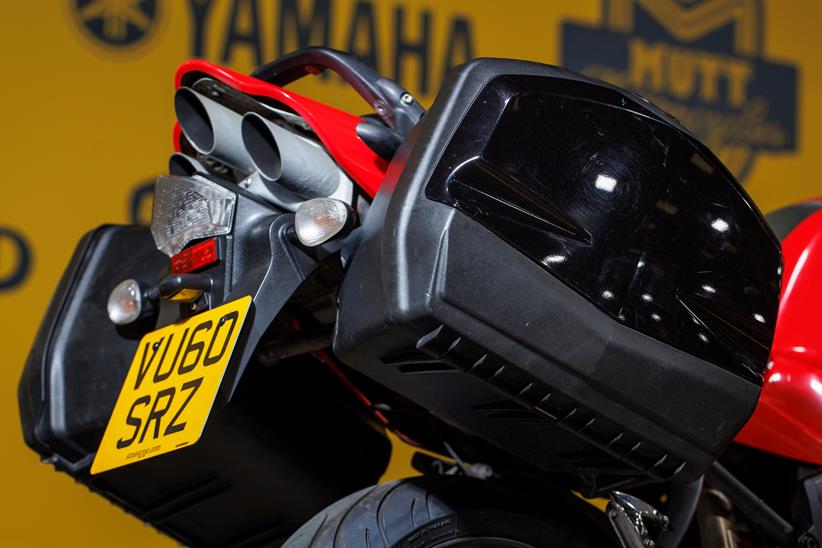Cheap, comfy and quick! These £3k sports tourers offer plenty of bang for your buck
Who doesn’t love the thought of escaping the confines of their local neighbourhood in search of pastures new? And, better still, some thrilling and challenging roads to explore for the first time. If that sounds tempting, sports tourers could be your ideal travelling companion – especially if you don’t fancy joining the GS brigade.
Blending enough practicality and comfort to allow you to tick off the motorway miles, while packing the agility and performance to tackle a twisty Alpine pass, these bikes deliver the best of both worlds.
The good news is there are stacks of used examples for very reasonable money. In fact, armed with a budget of £3000 you can pick up a superb used sports tourer for sale. Need more proof? Here are our top three best budget touring motorcycles that can all be had for less than three grand, leaving you spare cash to spend on the important things in life – like ferry tickets, fuel and hotels.
Option 1: Honda VFR800Fi 1998-2001 (£1500-£3500)

Fast facts:
- Engine 781cc 16v DOHC V4
- Frame Aluminium twin spar
- Suspension F: 41mm telescopic forks, adjustable preload. R: Monoshock, adjustable preload and rebound
- Front brake 2 x 296mm discs, three-piston calipers. Linked
- Rear brake 255mm disc, three-piston caliper. Linked
- Seat height 800mm
- From the launch: Honda VFR800 review
Honda’s class-defining V4 sports-tourer arrived on the scene in 750 format in 1987 but it wasn’t until the VFR800Fi landed in 1998 that it really matured into an incredibly polished product. In fact, so good was the Fi that its replacement, the 2002 VFR800 VTEC, struggled to persuade owners there was any need to swap to the far more complex new variant.
Featuring fuel-injection for the first time, as well as a bigger-capacity, longer-stroke V4 motor (which has gear-driven cams) and heavily-upgraded chassis, this generation of VFR strikes the perfect balance between sports and touring. Plush and refined enough to make all-day riding or commuting a breeze, and with a surprisingly effective fairing, the VFR will happily tick the touring box with its V4 engine delivering impressive mid-range flexibility and a great exhaust note. But it is when the corners come calling that the VFR really shines.

Despite being heavier than previous generations of VFR, the Fi is far plusher on its suspension and more assured through bends, allowing you to enjoy the ride with confidence. Arm it with a set of modern sports-touring tyres and a suspension overhaul (if required) and you’ll certainly keep up with far more recent machinery on a twisty pass, and do so in complete comfort. What’s not to like? Well, there are a few things to look out for.
Although owners will wax lyrical about the VFR, it isn’t faultless and that means you need to be a bit careful when buying a used one. Now over 20 years old, parts are starting to wear out and they can be costly to fix and sometimes tricky to locate. The linked brakes come in for a pile of criticism, too. Not all of it is justified and they can be de-linked if desired. Servicing costs can also be high as the V4 is quite complex to work on (especially if it needs a valve clearance check, which is every 16,000 miles).
But despite these few downsides, the 800 is a truly great bike that feels like a top drawer product throughout, has impressive build quality and an excellent reliability record. In fact, that’s what many will tell you VFR stands for – Very Flipping Reliable.

Honda VFR800F buying advice – what to look for
- Exhaust rot – OEM headers rot badly, so most are now stainless to match the end can. Header studs are small (6mm)and are often also corroded, strip their threads, snap or seize.
- Brakes – Some owners remove the linked feature with a de-link kit, it is easy as ABS wasn’t an option.
- Seized rear hub – Loosen the pinch bolt (torqued to 74Nm) and check the eccentric adjuster moves freely.
- Find a used Honda VFR800 for sale.
Option 2: Suzuki GSX1250FA 2010-2016
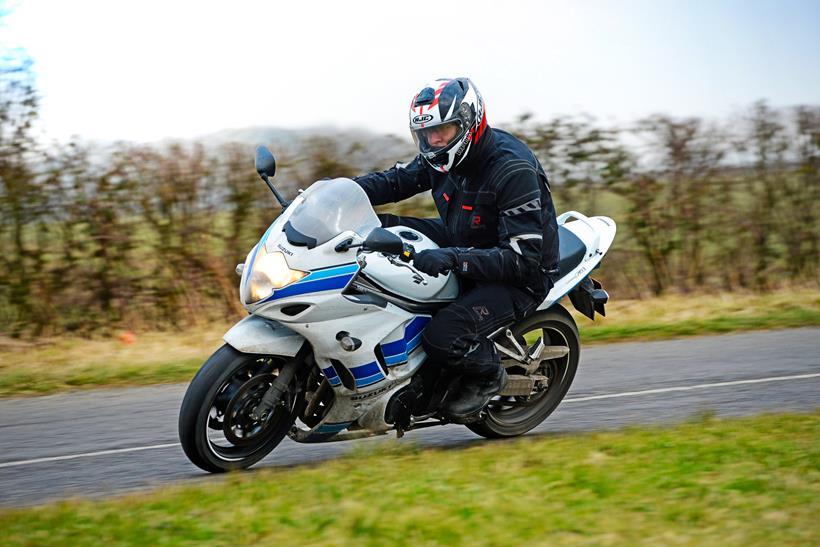
Fast facts:
- Engine 1255cc 16v DOHC inline four
- Frame Tubular-steel
- Suspension F: 41mm telescopic forks, adjustable preload. R: Monoshock, adjustable preload
- Front brake 2 x 310mm discs, Tokico four-piston calipers. ABS
- Rear brake 240mm disc, one-piston caliper. ABS
- Seat height 805/825mm
- From the launch: Suzuki GSX1250F review
A wonderful meat-and-two-veg style of motorcycle, the GSX1250FA arrived two years after its smaller-capacity GSX650F sibling and brought with it practicality, versatility and a dash of flair – not to mention a stomping big-capacity inline four motor and attractively low price.
It’s effectively a Bandit 1250 with a full fairing attached, but Suzuki did just enough when they created the GSX to differentiate it from the Bandit and actually make it a far more tempting prospect as a result. Not only does the generous bodywork make it considerably more practical than the half-faired Bandit S (not to mention keep its motor protected from grime), it also lends the Suzuki a stylish look and a serving of sporty attitude.

Add to this ABS, a relaxed riding position (for rider and a pillion) and a barn-stormer of a motor and it all adds up to an accomplished solo or two-up tourer. But is it sporty with it? That’s debatable.
Tipping the scales at 257kg, the GSX feels a weighty bike and despite hiding its bulk well and having a reassuringly low seat height (which is adjustable), it certainly errs more towards touring and stability than sporty agility.
Not the fastest turning bike, the GSX rolls through bends with assurance but is hampered by rather budget suspension and its overall bulk when it comes to putting the hammer down. That said, the inline four is so smooth and gutsy, that what you miss out on with mid-corner prowess you more than make up for on exit as it powers forward with effortless drive. If you like your motors to be low-revving and gutsy, the GSX’s is a proper grunt-monster.
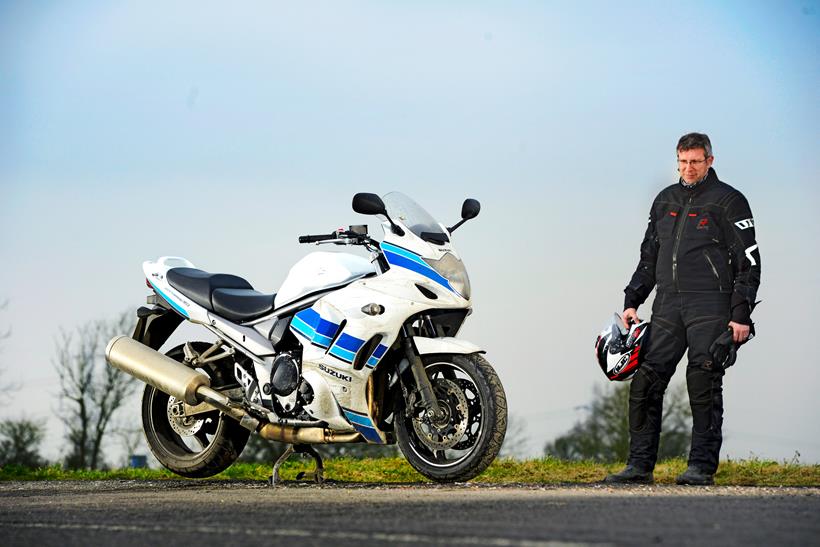
But life, as ever, isn’t always rosy with the Suzuki. In 2010 the GSX cost just £6999, which was nearly £4000 less than the rival Yamaha Fazer FZ1 and made the Suzuki seem wildly affordable in the sports-touring segment.
Of course, to hit this price point savings had to be made and that’s what really harms the GSX in the used market because Suzuki cut corners on its build quality. As a result there are far, far, more tatty GSXs out there than minters and it is seriously challenging to keep one looking good, even with copious amounts of anti-corrosion spray applied. If you aren’t fussed about aesthetics, the GSX is mechanically pretty bulletproof and replacement parts are both cheap and plentiful – but if the look of corrosion bothers you, they are best avoided.
Suzuki GSX1250FA buying advice – what to look for

- Rust – The GSX’s steel frame can start to rust should its protective layer of paint become chipped. Give it a good inspection, especially in areas that can trap water.
- Lazy starter – A new starter is £688 from Suzuki or £100 for a pattern item and it’s an easy job.
- Neutral switch – Can become sticky or fail to indicate the bike is in neutral. A new switch is £130.
- Find a used Suzuki GSX1250F for sale.
Option 3: Triumph Sprint ST 1050 2005-2010 (£1800-£4500)
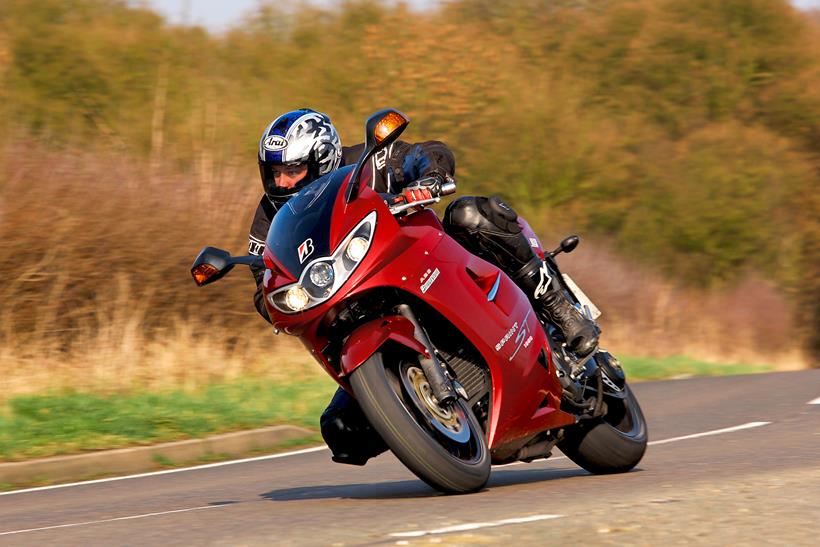
Fast facts:
- Engine 1050cc 12v DOHC inline triple
- Frame Aluminium beam perimeter
- Suspension F: 43mm telescopic forks, adjustable preload. R: Monoshock, adjustable preload and rebound
- Front brake 2 x 320mm discs, four-piston Nissin caliper. Optional ABS
- Rear brake 255mm wave disc, two-piston caliper. Optional ABS
- Seat height 805mm
- From the launch: Triumph Sprint ST 1050 review
A machine that is fondly remembered by many riders, the Sprint ST 1050 arrived in 2005 and replaced the bulbous older ST model which had been powered by the 955i engine. The bike is far better looking – Triumph really pulled out the stops when designing the all-new ST and it boasted a distinctive triple-exit underseat pipe, the bodywork was far more contemporary, the triple engine upgraded to 1050cc and the chassis enhanced to increase the bike’s sporting ability.
And what a machine it turned out to be.

So many manufacturers struggle to hit the right balance with their sports-tourers, either leaning too much towards the touring side and making the bike sluggish to steer or chasing agility at the expense of comfort – with this generation of Sprint ST, Triumph got the blend absolutely spot on.
Sitting on the ST today, there is something pleasingly old-school and reassuring about its feel. The handlebars are pulled comfortably back, the seat is just the right side of squishy and the pegs decently low, meaning you are positioned very comfortably, but there is still an air of sporty performance with the large rev counter taking precedence in the stylish triple-screen cockpit and the screen not dominating the view ahead. And then you fire up that thee-cylinder engine.
An absolutely fantastic unit for road riding, the 1050 triple may be a bit agricultural in its gearbox department but that doesn’t detract from the overall appeal. Stacked full of easy-going mid-range torque that gives way to a pleasingly sporty top-end should you allow it to rev, it’s perfectly suited to life in a sports-tourer and has bags of charm with a great exhaust note from the triple exits.

Align this to a chassis that, just like its motor, is happy to either take it easy or up the ante when requested to reveal a remarkably sporty side, and it results in a bike that is immensely enjoyable to ride and a real star of the used world.
It’s reliable too. Ignore the doubters, treat it right and an ST will run and run with very few major issues to worry about.
For this week’s £3000 budget you can pick up a decent example of a Sprint ST that will probably even have panniers fitted, meaning it is all set for a trip away once summer rolls around again. Take care of the basics through regular preventative maintenance, and ideally treat the suspension to a refresh if you can afford the outlay, and the Triumph Sprint ST 1050 will prove all the bike you could ever need.
Triumph Sprint ST 1050 buying advice – what to look for

- Tanks a lot… – The original Sprint ST had a composite tank, which is known to swell due to ethanol in modern fuels. Bikes after 2008 have metal tanks and are a better buy.
- Luggage – Triumph’s official panniers came as standard on bikes built after 2008 and are handy to have.
- Eccentric adjuster – The adjuster in the hub should be stripped and regreased every 12,000 miles.
- Find a used Triumph Sprint ST 1050 for sale.
The MCN Verdict – £3k sports tourers
At under £3000, these three deliver on not only their promise of practicality and fun but also in terms of value for money. But which is the best cheap touring motorcycle?
The Suzuki’s engine is undoubtedly the star component on the GSX but to experience that wonderful inline four’s smooth torque you need to put up with dubious build quality and fairly sluggish steering. If you do a lot of two-up sports touring at a relaxed pace it will suit but for solo tourers looking for fun, there are better options.
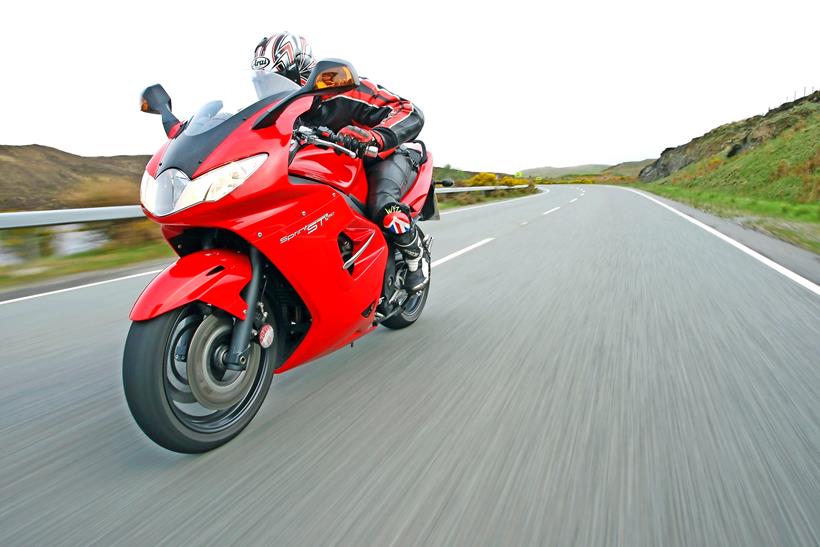
It may be old now but the VFR800Fi is still a great bike. The V4 is wonderfully flexible, the chassis sporty and the level of finish and the overall build quality is superb.
But given a £3000 budget, we’d pick the Sprint ST over the Honda (just). As well as being a bit roomier, the more modern-feeling Triumph’s triple motor and all round blend of sporting potential and practicality makes it our choice. A great bike that ticks every box you could ask for on a sports-tourer, at £3000 it delivers and then some.
Pros:
- VFR’s great V4 motor
- GSX’s torquey inline four
- All-round ability of the ST
Cons:
- V4 is pricey to work on
- Suzuki’s weak finish
- Triumph’s gearbox
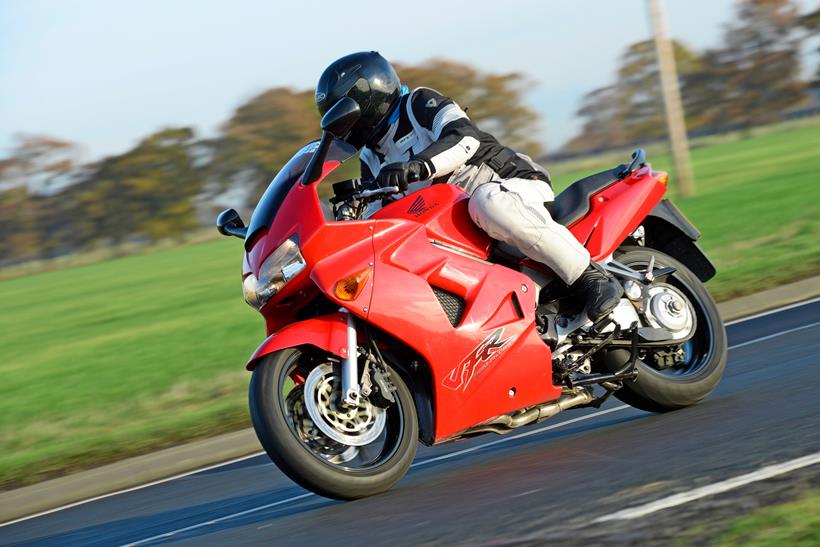
While you’re here: How MCN tests bikes
Our highly experienced team of road testers grind out hundreds of miles, come rain or snow, on the UK’s pothole-ridden roads to decide which bike is best in a particular category.
Using years of riding and racing experience (on and off-road), our expert journalists are able to assess the capabilities of a machine and translate that into understandable language to help MCN’s readers make an informed buying decision. Pitching bikes against their main rivals, we aim to give a conclusive verdict on which bike is best for your needs and your budget.
Using their considerable knowledge of the motorcycling market and audience, they can put a motorcycle into context and deliver a verdict that means something to anyone considering buying a particular machine, whether it be a cutting-edge, 200bhp sportsbike, a tall adventure weapon or a low-capacity 125cc machine.
When we ride the bikes in the UK we tend to do at least one full day of riding on various different types of road and in varying conditions. Our testers will then spend another day riding the bike – with rivals – to get images and video footage for our print and online reviews.
We will also, often, weigh the bikes, speed and dyno test them to see just how accurately the manufacturer claims are in these areas to give a more empirical assessment.
